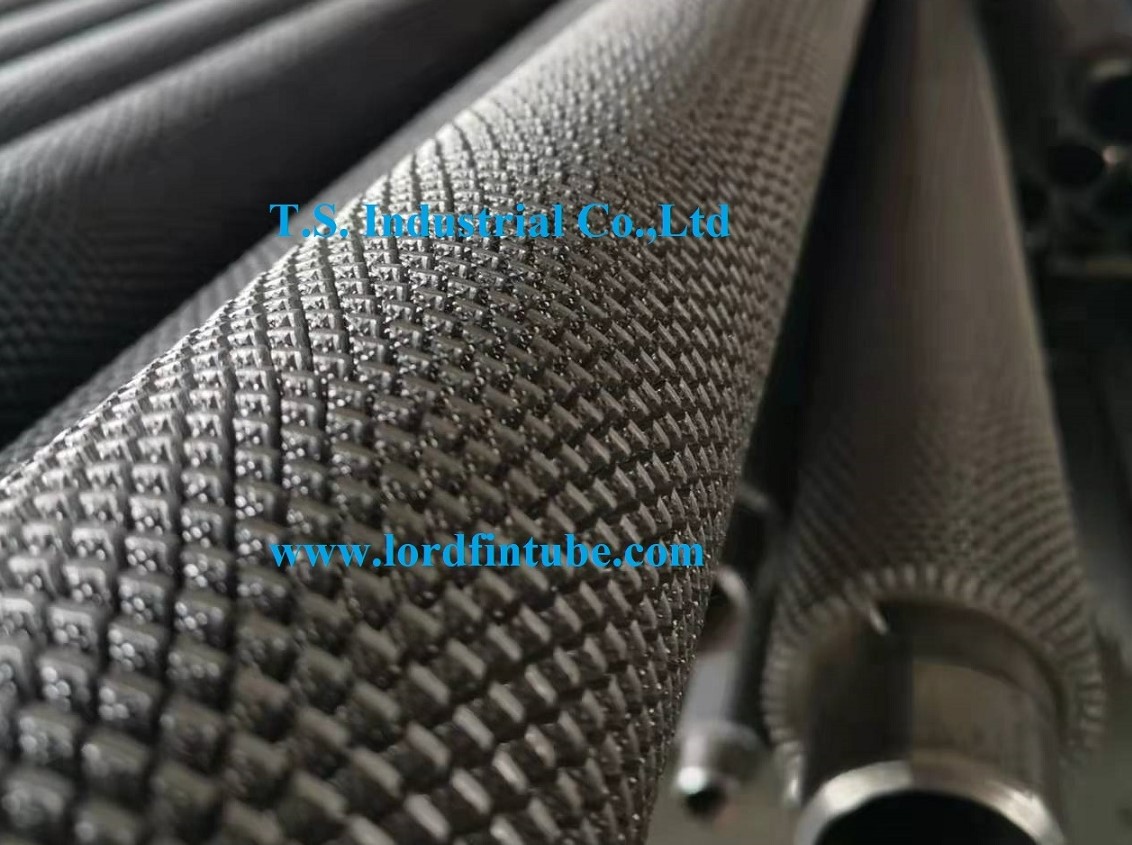Comparation between solid fin tube and serrated fin tube
Comparing Solid Fin Tubes and Serrated Fin Tubes
When designing heat exchangers, selecting the right type of fin tube is critical for optimizing heat transfer efficiency, operational costs, and longevity. Two of the most commonly used fin tube designs are solid fin tubes and serrated fin tubes. Each has distinct advantages depending on the application and operational requirements. This article dives deeper into the differences between these two types of finned tubes, along with their practical implications for different industries.
1. Heat Transfer Efficiency: Solid vs. Serrated Fin Tubes
Serrated fin tubes generally offer superior heat transfer performance compared to solid fin tubes. The serrated structure increases the surface area in contact with the surrounding fluid, enhancing the heat exchange rate. The edges of the serrated fins also promote the formation of small turbulence or vortices in the fluid, which disrupts the boundary layer, further improving heat transfer.
Solid fin tubes, while effective in many applications, typically have lower heat transfer efficiency. The continuous surface of solid fins provides a more uniform but less efficient interaction with the fluid flow compared to the complex surface geometry of serrated fins. Solid fins are often used in applications where the heat load is relatively low and uniform heat distribution is sufficient.
2. Fouling Resistance: How Fin Structure Plays a Role
One often-overlooked aspect of heat exchanger performance is the resistance to fouling, which can degrade efficiency over time. Serrated fins excel in this area. The irregular surface created by the serrations disrupts the smooth flow of fluids, preventing the accumulation of dirt, dust, or other deposits. This makes serrated fin tubes particularly useful in environments with dirty or particulate-laden fluids, such as in chemical processing or in power plants using coal.
In contrast, solid fin tubes are more prone to fouling because the smooth, continuous surface allows particles to settle easily. While regular maintenance can mitigate this, the natural tendency for fouling on solid fins makes serrated fins a better long-term solution in certain applications.
3. Pressure Drop: The Role of Fluid Flow Resistance
A critical consideration in heat exchanger design is the pressure drop across the finned tube, which impacts the efficiency of the system and the power required to pump the fluid through the system. Serrated fins generally result in a lower pressure drop compared to solid fins. This is because the serrations allow for better fluid mixing and less resistance to flow, leading to more efficient fluid movement.
On the other hand, solid fin tubes tend to create more resistance to fluid flow, leading to higher pumping costs. This makes serrated fin tubes ideal for applications where maintaining a low pressure drop is crucial, such as in HVAC systems or large-scale industrial heat exchangers.
4. Durability and Structural Integrity: A Tradeoff Between Strength and Efficiency
Solid fin tubes have an advantage when it comes to durability and strength. Since they are made from a single piece of material, they tend to have a more robust structure. This makes them less prone to mechanical damage, such as bending or detachment of fins, and they are often favored in high-stress environments like power plants or heavy-duty industrial equipment.
Serrated fin tubes, on the other hand, may be more susceptible to damage, especially if the serrations are not well-formed or if the material is too thin. The mechanical strength of serrated fins can be a concern in high-pressure systems or applications involving abrasive fluids. However, modern manufacturing techniques and materials have significantly improved the durability of serrated fins, offering a balanced solution for various industrial needs.
5. Customizability: Tailoring Fin Tubes to Specific Applications
Serrated fin tubes offer significant advantages in terms of customizability. The height, depth, and angle of the serrations can be adjusted based on the specific requirements of the application. This flexibility allows engineers to optimize the fin design for particular fluid flow characteristics, heat transfer requirements, and space constraints. Serrated fins can also be designed to minimize the impact on pressure drop while maximizing heat exchange efficiency.
In contrast, solid fins are more limited in terms of design flexibility. The solid structure offers fewer options for customization, and the design tends to be more standardized. However, for applications where a basic, non-variable design is sufficient, solid fin tubes can offer a simple and cost-effective solution.
6. Cost Considerations: Balancing Performance with Budget
Cost is often a significant factor in choosing between solid and serrated fin tubes. Solid fin tubes tend to be less expensive to manufacture because they are simpler to produce, with fewer complex design elements. For less demanding applications, where maximum heat transfer is not the primary concern, solid fin tubes provide a cost-effective solution.
On the other hand, serrated fin tubes, with their more intricate design, typically come with a higher initial cost. However, the increased heat transfer efficiency, reduced fouling, and lower pressure drop can lead to long-term cost savings, particularly in energy-intensive or maintenance-heavy applications. Additionally, the customizability of serrated fins can justify the higher upfront costs in systems where performance is critical.
How to Choose Solid vs. Serrated Fin Tubes
The choice between solid fin tubes and serrated fin tubes depends on several factors including heat transfer performance, fouling resistance, pressure drop, durability, and cost.
Serrated fin tubes are ideal for applications where high heat transfer efficiency is required, such as in chemical processing, power generation, and HVAC systems.
Solid fin tubes, with their superior strength and durability, are better suited for simpler, lower-stress environments, where efficiency is not the highest priority.
Both types of fin tubes have their place in heat exchanger design, and the decision will ultimately depend on the specific needs of the application, including thermal performance, maintenance, and operational efficiency.


